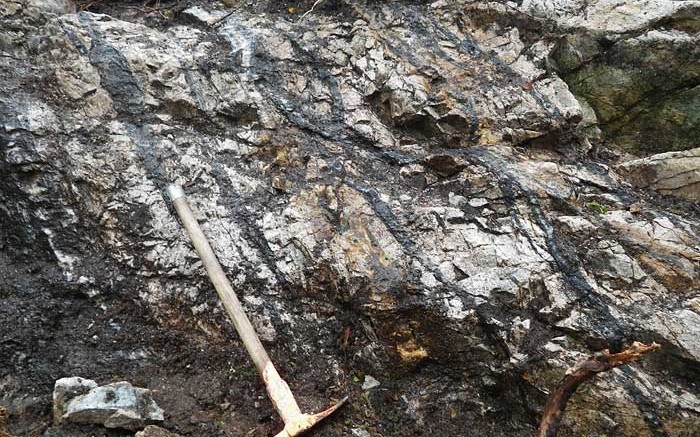
Marathon Gold has released the results of 16 diamond drill holes, which extend the strike length of the Berry zone to 350 metres.
The drilling targeted both the Berry zone as well as the ground to the northeast, towards the area known as the Frozen Ear Pond Road in Newfoundland.
The drilling targeted both the Berry zone as well as the ground to the northeast, towards the area known as the Frozen Ear Pond Road in Newfoundland
The drill highlights include 14 metres of 8.06 g/t gold, 12 metres of 8.03 g/t gold and 24 metres of 2.44 g/t gold.
The Berry zone is situated within the 6-km long Sprite corridor between the Leprechaun and Marathon deposits and the drilling continues to intersect mineralization that is characteristic for the Valentine project.
Gold at the site is typically found in shallow-dipping, stacked quartz-tourmaline-pyrite-gold veins, which are within the hangingwall of the Valentine Lake shear zone.
Drilling so far has traced the Berry zone mineralization over 350 metres of strike, a width of up to 40 metres and down to a depth of 200 metres.
“We are again encouraged by the latest drill results from the Sprite corridor, and at the developing Berry zone in particular,” Matt Manson, the company’s president and CEO, said in a release.
“Our 2020 drill program includes a drill budget of up to 32,000 metres comprising broad exploration step-outs from the Berry zone through the Frozen Ear Pond Road and ultimately to the limit of the Marathon deposit, which remains open on the southwestern side.”
According to Manson, the area of this year’s drill program would cover 3 km of prospective strike with additional infill work anticipated for the Berry zone ahead of a potential maiden resource estimate.
Marathon first reported results from Berry in early March.
Earlier this month, the company released the results of a prefeasibility study, based on mining of the Marathon and Leprechaun deposits. It outlined a 12-year open-pit mine, producing an average of 175,000 oz. of gold annually in the first nine years of operation.
With an initial capital cost of C$272 million and average life-of-mine, all-in sustaining costs of $739 per oz., the net present value estimate for the project, at a 5% discount rate, came in at $472 million.
(This article first appeared in the Canadian Mining Journal)